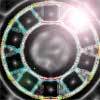Skip over navigation
This problem uses basic notions of trigonometry and areas of triangles which are fundamental to developments in A-level mathematics.
Being able to work with diagrams such as this is useful prepation for both coordinate geometry and mechanics.


Or search by topic
Number and algebra
Geometry and measure
Probability and statistics
Working mathematically
Advanced mathematics
For younger learners
Geometric Trig
Age 16 to 18
ShortChallenge Level 





This problem uses basic notions of trigonometry and areas of triangles which are fundamental to developments in A-level mathematics.
Being able to work with diagrams such as this is useful prepation for both coordinate geometry and mechanics.
You may also like
Logosquares
Ten squares form regular rings either with adjacent or opposite vertices touching. Calculate the inner and outer radii of the rings that surround the squares.
Ball Bearings
If a is the radius of the axle, b the radius of each ball-bearing, and c the radius of the hub, why does the number of ball bearings n determine the ratio c/a? Find a formula for c/a in terms of n.

